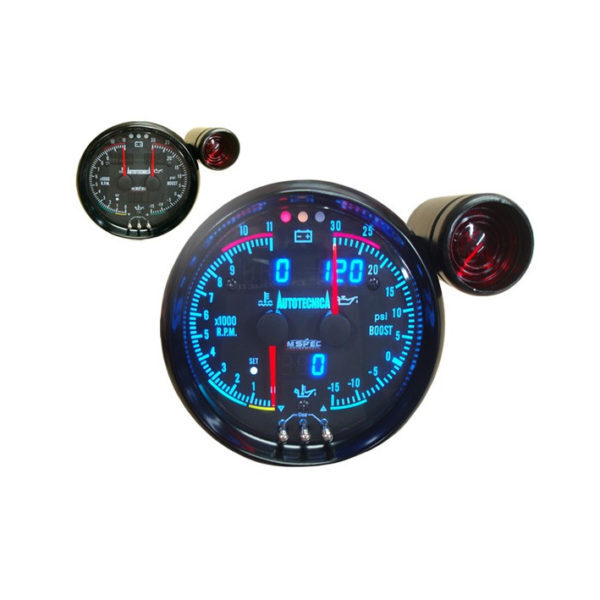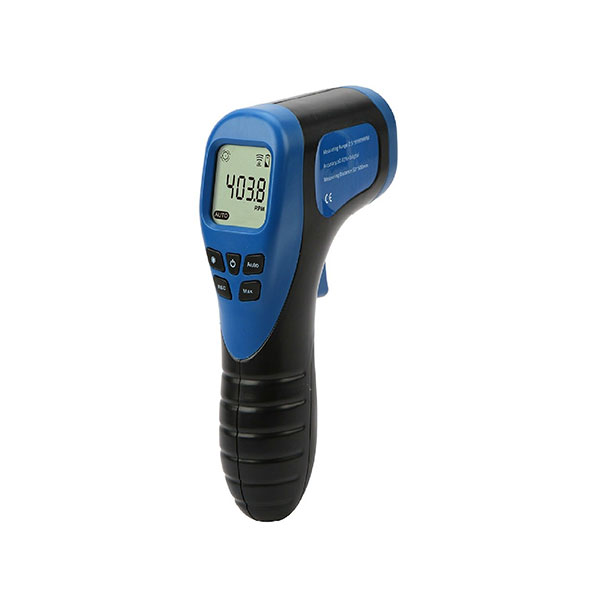Tachometer Essential: Every Little Thing You Required to Know for Accurate Readings
Wiki Article
Checking Out the Functions and Benefits of a Tachometer: A Comprehensive Overview for Automobile Enthusiasts
From providing real-time information on engine speed to aiding in maximizing gear changes, the tachometer offers as even more than simply a dial on the control panel. Its complex features not only enhance driving experience but likewise play a pivotal function in keeping engine health and wellness and effectiveness.Understanding the Fundamentals of a Tachometer
In the world of automobile instrumentation, comprehending the basics of a tachometer is necessary for any type of cars and truck lover wanting to explore the intricacies of engine efficiency surveillance. A tachometer, often shown on the control panel of a car, measures the engine's revolutions per minute (RPM) This important instrument gives real-time data on exactly how fast the engine crankshaft is revolving. By keeping an eye on the RPM, chauffeurs can guarantee they are operating within the optimal range to take full advantage of efficiency and efficiency.Tachometers typically have a range noted in transformations per minute, with a redline showing the maximum rate at which the engine can securely run (tachometer). This information is crucial for preventing engine damages and optimizing equipment shifting for hands-on transmissions. Furthermore, tachometers can aid in identifying engine concerns such as misfires or a falling short ignition system by identifying uneven RPM analyses
Importance of Monitoring Engine Rate

Checking engine rate is an important aspect of car maintenance and efficiency optimization for automotive lovers and professionals alike. The engine rate, gauged in revolutions per min (RPM), suggests just how quickly the engine's crankshaft is turning. By keeping a close eye on the RPM, vehicle drivers can make certain that the engine is running within the ideal variety, stopping possible damages from over-revving or delaying. Monitoring engine speed is especially crucial throughout gear shifts, as it aids vehicle drivers identify the right time to transform equipments for smooth velocity and effective gas consumption.
Additionally, tracking engine speed can also offer important insights into the overall health of the car. In general, keeping an eye on engine speed with a tachometer is an essential practice that can improve driving performance, prolong engine life, and guarantee a safer and more enjoyable driving experience.
Enhancing Efficiency Via Equipment Shifts
Correct gear changing guarantees that the engine runs within its optimum power band, enabling next for smooth find more info acceleration and enhanced gas economic climate. When shifting equipments, it is critical to pay interest to the engine speed suggested on the tachometer.
To attain peak efficiency through gear changes, drivers ought to exercise smooth and timely transitions in between gears, matching engine speed with roadway speed to harness the full potential of their car's powertrain.
Making Best Use Of Effectiveness With a Tachometer
Understanding the art of equipment shifting in high-performance vehicles not only enhances driving experience however likewise plays a critical function in taking full advantage of performance with a tachometer. tachometer. By paying close focus to the tachometer analyses, vehicle drivers can maximize their equipment changes to operate within the engine's most efficient range. When accelerating, shifting gears at the right RPM shown by the tachometer can prevent the engine from overworking or underperforming, leading to site improved gas performance and general efficiencyAdditionally, a tachometer assists chauffeurs avoid unneeded revving, which not just loses fuel yet also puts unneeded strain on the engine. Regularly checking the tachometer while driving enables smoother gear transitions, reducing damage on the transmission system gradually.

Advanced Tips for Tachometer Utilization
To dig into advanced suggestions for tachometer application, think about incorporating the usage of change lights. Shift lights are visual indicators that light up when it's time to change equipments based on engine transformations per minute (RPM), allowing for seamless gear modifications without regularly keeping an eye on the tachometer. By fine-tuning shift points and establishing advising limits, vehicle drivers can maximize velocity and engine performance while minimizing the risk of over-revving.Verdict
In verdict, the tachometer acts as a crucial device for cars and truck lovers to monitor engine rate, improve performance via equipment shifts, and optimize effectiveness. By understanding the features and benefits of a tachometer, vehicle drivers can enhance their driving experience and prolong the life-span of their automobile. Making use of sophisticated pointers for tachometer usage can further enhance driving skills and total performance when driving.Report this wiki page